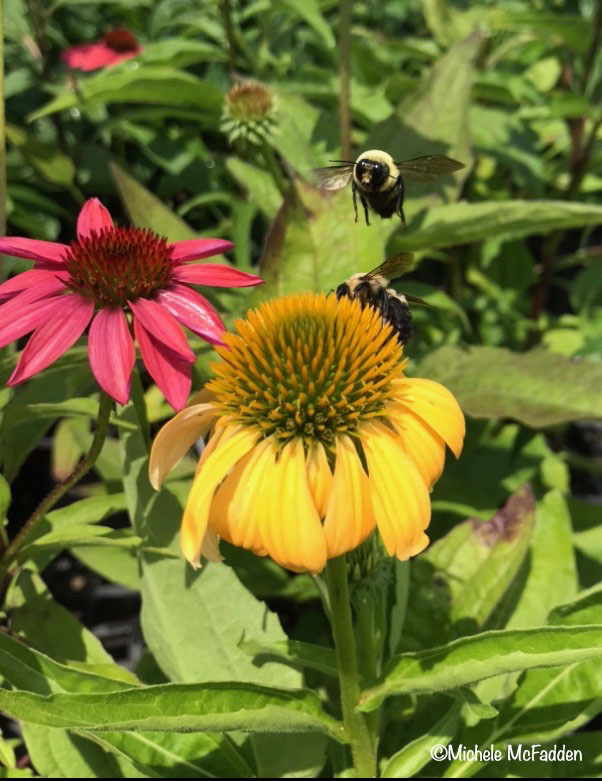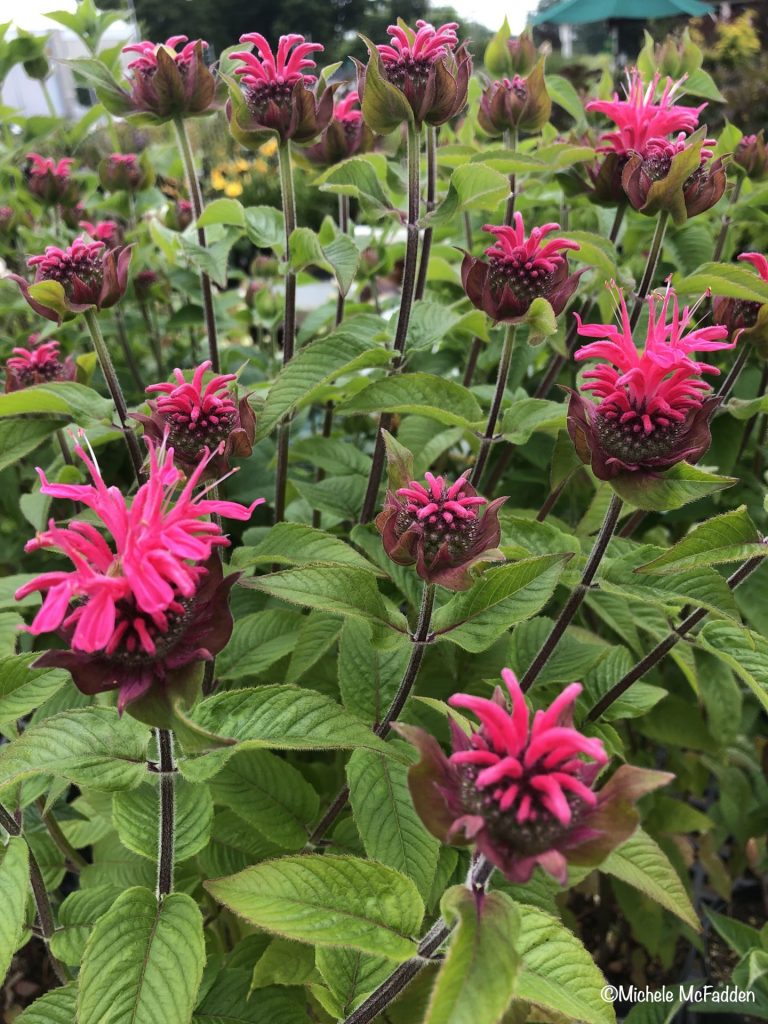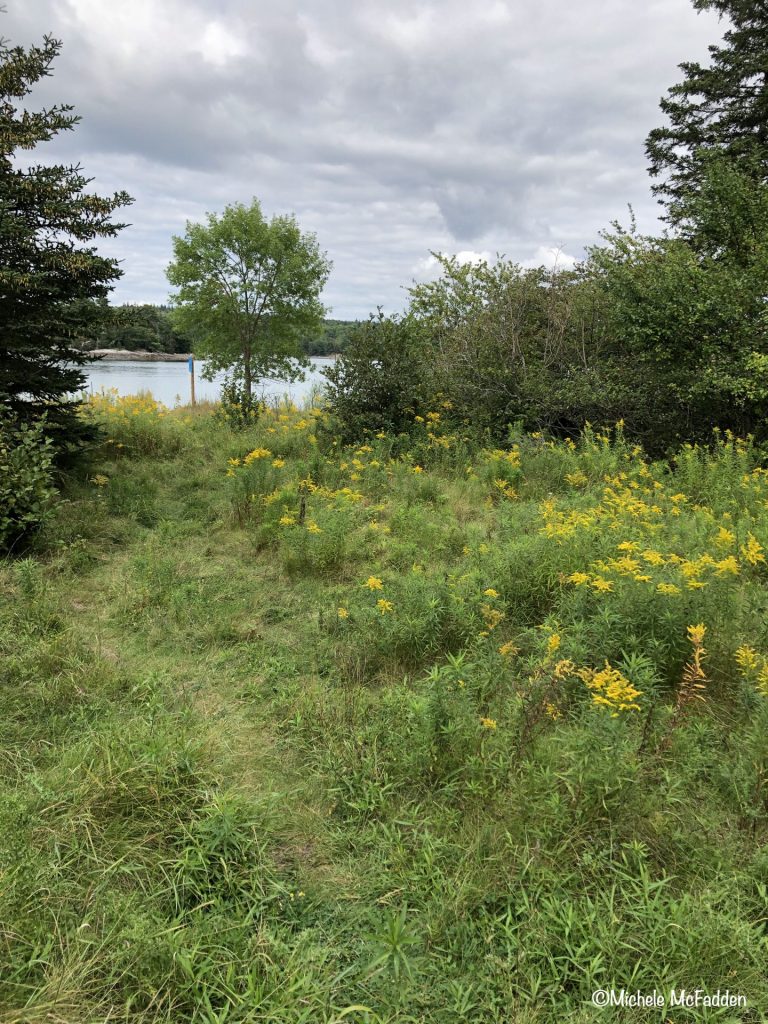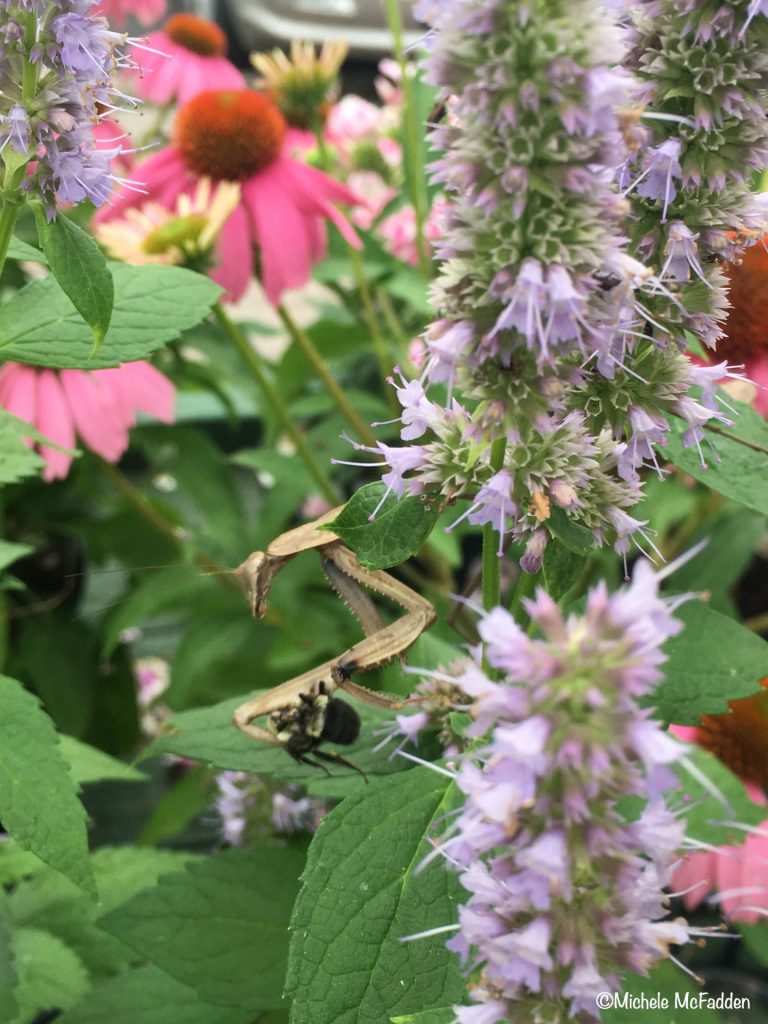Pollinator Profile: Bumble Bee (Bombus spp.)

Bee Profile
Bumble bees are perhaps one of the most widely recognized bees that grace our gardens and landscapes. With their characteristic buzzing and noticeably furry bodies adorned with pollen, bumble bees bring both joy for us as observers and ample pollination benefits to a large array of landscape plants and food crops. Bumble bees are in fact a genus of about 50 individual species that share similar attributes, 28 of which live in the Eastern US.
Life Cycle
Unlike European honey bees, bumble bees form annual colonies, meaning that each year a new queen emerges from hibernation to build and populate an entire colony. Over the course of the spring and summer the queen and the workers she herself incubated, oversee the rearing of several more generations of female workers. These workers collect the pollen and nectar necessary to support the growing colony. In the late summer, male drones are born that mate with a select few females. These young females, called gynes, forage for a couple weeks to build enough energy stores to hibernate through the winter. No other member of the colony lives through the winter frost. In the early spring, these young queens emerge and each begin her own nest. And the cycle continues…
Foraging

With their large size and long tongues, bumble bees are able to access pollen and nectar from a large variety of flower types; they are called generalists in that sense. That is a good thing because members of the colony need to feed from February until late fall, so it is critical that they have a wide variety of food sources available. Bumble bees can do what few other bees can… Buzz! What we hear as buzzing is called sonication and has a critical role in pollen collection for the bees. Buzz pollination occurs when the bees rapidly vibrate their flight muscles while holding onto the flower anthers (male flower parts that hold pollen). This vibration releases pollen that would otherwise be inaccessible. The bees can then brush the pollen from their bodies and head and pack it into the pollen baskets on their rear legs. Food crops like tomatoes, blueberries, and apples rely on buzz pollination, so thank a bumble bee next time you slice that tomato for your sandwich!
What Can You Do?

So, how can you ensure a healthy population of bumble bees in your garden or community?
- Plant flowers, trees, and shrubs with a variety of bloom times, ensuring that the bees will have nectar and pollen sources from early spring through late fall.
- Resist raking and clearing in early spring so the young queens can emerge safely from the ground and begin their broods.
- Leave piles of plant debris and abandoned rodent holes be. These are the favorite nesting sites of bumble bees as they are already built, protected, and ready for a new queen to begin her brood.
Resources & Further Reading

Holm, Heather. Bees: An Identification and Native Plant Forage Guide. Pollination Press, 2017.
Holm, Heather. Pollinators of Native Plants: Attract, Observe and Identify Pollinators and Beneficial Insects with Native Plants. Pollination Press LLC, 2014.
Mader, Eric, et al. Attracting Native Pollinators: Protecting North Americas Bees and Butterflies: the Xerces Society Guide. Storey Pub., 2011.